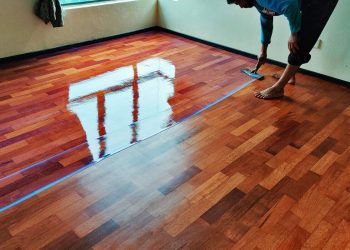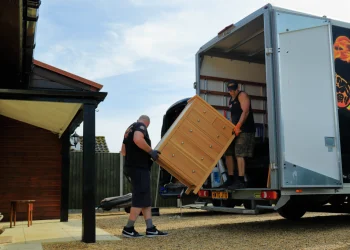The specter of asbestos continues to cast a long shadow over properties across the United Kingdom, particularly in regions like the West Midlands, where a rich industrial heritage and a history of robust building construction often mean that this insidious material lies hidden within the fabric of countless structures. Once lauded for its remarkable fire-resistant and insulating properties, asbestos is now universally recognised as a grave health hazard. Its microscopic fibres, when disturbed, can become airborne and, if inhaled, lead to devastating and often fatal diseases such as mesothelioma, asbestosis, and various forms of lung cancer. Given this severe health risk, the decision to address asbestos-containing materials (ACMs) within any property, be it residential, commercial, or industrial, is not merely a matter of maintenance but a critical public health imperative. It is a task that categorically demands the involvement of highly trained and certified professionals, an unwavering commitment to safety protocols, and a profound understanding of the complex legal landscape surrounding its management and disposal. For anyone contemplating asbestos removal West Midlands, the arguments for engaging expert services are overwhelming and non-negotiable.
The primary and most compelling reason to defer to experts for asbestos removal is the profound health risk posed by improper handling. Asbestos fibres are invisible to the naked eye, meaning that an untrained individual attempting to remove or disturb ACMs will be unknowingly releasing these lethal particles into the air. What might seem like a straightforward DIY project – perhaps removing an old corrugated roof sheet, disturbing loft insulation, or drilling into an textured ceiling – can instantaneously transform a contained hazard into a widespread contaminant. Without the specialised personal protective equipment (PPE), rigorous containment strategies, and controlled air management systems that professionals employ, these fibres will settle on surfaces throughout the property, circulate through ventilation systems, and pose a long-term threat to all occupants. Family members, employees, and even pets can inadvertently inhale these fibres, initiating a silent process that may only manifest as a life-threatening disease decades later. The potential for such irreversible harm underscores that the risks associated with amateur asbestos work are simply too high to countenance.
Beyond the immediate health implications, the legal framework governing asbestos in the UK is stringent and complex, placing significant duties and responsibilities on property owners and those in control of premises. The Control of Asbestos Regulations 2012 mandate a ‘duty to manage’ asbestos, requiring those with responsibility for maintenance and repair of non-domestic premises to identify and manage the risks of ACMs. While domestic properties have slightly different rules, the underlying principle of safe management remains paramount. Attempting asbestos removal without the necessary training, licences, and adherence to approved methods can lead to severe legal penalties, including substantial fines and even imprisonment. A non-compliant approach could also result in civil litigation if individuals are harmed due to negligent handling. Expert asbestos removal specialists are not only thoroughly conversant with these intricate regulations but are also fully licensed and insured, ensuring that all work performed adheres to the highest legal and safety standards. This offers property owners invaluable protection against potential future liabilities, providing peace of mind that the work is not only effective but also entirely lawful.
A defining characteristic of professional asbestos removal is the deployment of highly specialised equipment and sophisticated techniques that are utterly beyond the scope of a typical DIY enthusiast. This equipment includes, but is not limited to, high-efficiency particulate air (HEPA) filter vacuums specifically designed to capture microscopic asbestos fibres, negative pressure units to prevent fibre migration from the work area, and advanced air monitoring devices to continuously assess airborne fibre levels. Furthermore, professional teams utilise extensive ranges of disposable, airtight PPE, including full-body suits, respirators with appropriate filters, and sealed footwear, all meticulously used and disposed of after each operation to prevent cross-contamination. The setup of a controlled demolition or removal area involves constructing sealed enclosures using robust polythene sheeting, often with airlocks and decontamination units, to create a secure environment. Such an operation is not a simple cleaning task; it is a meticulously planned and executed engineering feat designed to isolate, extract, and contain hazardous material safely.
The process of containing and decontaminating an asbestos work area is perhaps one of the most critical aspects of professional removal, illustrating the profound difference between expert and amateur approaches. Before any removal work commences, specialists meticulously establish exclusion zones and construct airtight enclosures around the ACMs. This prevents the escape of fibres into unaffected areas of the building or the external environment. Once the asbestos is carefully removed, often using wet methods to suppress dust, a multi-stage decontamination process begins. This involves thoroughly cleaning the work area, including all surfaces and equipment, followed by air testing conducted by independent, accredited laboratories to confirm that fibre levels are below safe thresholds. Only after receiving clearance certificates from these rigorous tests is the enclosure dismantled. An untrained individual would lack the knowledge, equipment, or protocols to achieve this level of decontamination, almost guaranteeing that airborne fibres would be dispersed throughout the property, turning a specific hazard into a pervasive, long-term threat.
Furthermore, the safe and legal disposal of asbestos waste is an area fraught with regulatory complexities and environmental risks if not handled correctly. Asbestos is classified as hazardous waste and cannot simply be thrown into a skip or taken to a regular landfill site. It must be double-bagged in specially marked, thick polythene bags, transported by licensed hazardous waste carriers, and ultimately disposed of at designated licensed waste transfer stations or landfill sites specifically authorised to accept asbestos. Attempting to dispose of asbestos illegally, perhaps by dumping it in an unauthorised location or mixing it with general waste, carries severe legal penalties and poses a significant environmental and public health risk to the wider community. Professional asbestos removal companies have established relationships with these specialist disposal sites and possess the necessary licences and procedures to ensure that all hazardous waste is removed from your property and disposed of in full compliance with environmental regulations, thus protecting both the client and the environment from harm.
The depth of training and certification required for asbestos professionals is another compelling argument for their engagement. These specialists undergo extensive, ongoing training in asbestos awareness, non-licensed work, licensed work, and supervisor training, often leading to qualifications from recognised bodies. They are trained to identify different types of asbestos (e.g., chrysotile, amosite, crocidolite), understand their friability (how easily they release fibres when disturbed), and know the specific removal techniques appropriate for each type and application. This detailed knowledge allows them to develop tailored risk assessments and method statements for each unique situation, ensuring the safest and most effective removal strategy. An untrained individual simply cannot possess this breadth of critical knowledge, making any attempt at DIY removal inherently dangerous and potentially catastrophic.
Before any physical work even begins, professional asbestos services conduct thorough risk assessments and management plans. This typically involves a detailed survey of the property to accurately identify the location, type, and condition of any ACMs. Based on this comprehensive assessment, they then develop a site-specific plan outlining the methodology for safe removal, containment strategies, air monitoring procedures, emergency protocols, and waste disposal arrangements. This proactive approach ensures that every potential risk is identified and mitigated before operations commence, minimising the likelihood of unforeseen complications or accidental fibre release. Such meticulous planning is an integral part of professional practice, a critical component that is entirely absent in an amateur approach, where discovery and improvised action often dictate the dangerous course of events.
Ultimately, engaging experts for asbestos removal West Midlands provides invaluable peace of mind. Knowing that a highly hazardous material has been handled safely, legally, and to the highest industry standards by certified professionals is a significant comfort. It removes the burden of liability from the property owner, as the responsibility for safe execution lies with the licensed contractor. This peace of mind extends beyond the immediate removal; it assures that the property is truly safe for future occupants, significantly mitigating any potential health risks or legal repercussions down the line. For landlords or businesses, it also safeguards their reputation and ensures compliance with health and safety obligations towards tenants or employees.
While the upfront cost of professional asbestos removal might seem substantial, it represents a crucial investment that can prevent far greater expenses in the long run. The financial ramifications of improper asbestos handling are staggering: astronomical medical bills from asbestos-related diseases, crippling legal fines for non-compliance, costly and extensive secondary clean-up operations due to widespread contamination, and significant devaluation of the property if asbestos contamination is not properly addressed and certified clear. Contrast this with the one-time, albeit significant, cost of professional removal, which not only mitigates these risks but also adds tangible value to a property by rendering it safe and compliant. Choosing the cheap, DIY route is a false economy, leading to a host of problems that are both financially devastating and tragically irreparable in terms of human health.
In conclusion, the decision to use professional experts for asbestos removal West Midlands is not an option but an absolute necessity. Given the severe and irreversible health risks, the stringent legal requirements, the specialised equipment and techniques involved, the complex containment and decontamination protocols, and the need for compliant hazardous waste disposal, attempting to manage asbestos without professional expertise is an act of profound irresponsibility. Engaging certified, experienced professionals ensures that the work is carried out safely, legally, and effectively, protecting occupants, the environment, and the property owner from a myriad of devastating consequences. It is an investment in health, safety, and long-term peace of mind, an undisputed imperative when dealing with one of the most dangerous materials known to humanity.
Get in Touch:
D&M Asbestos Removal Ltd
01902 213218
dmasbestosremoval.co.uk











